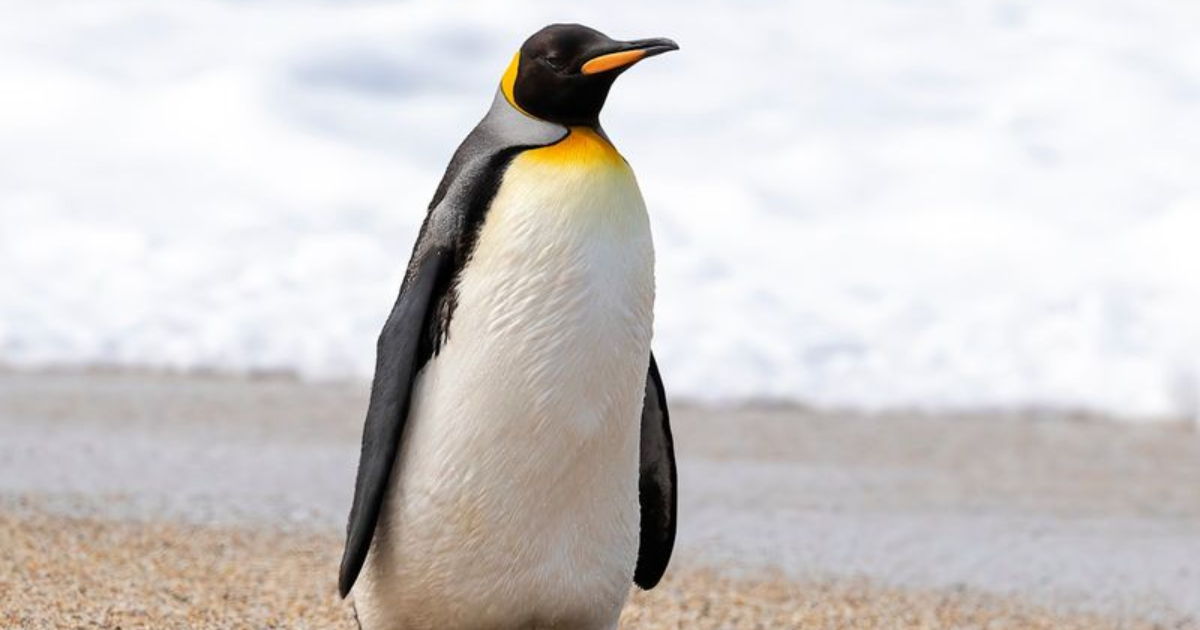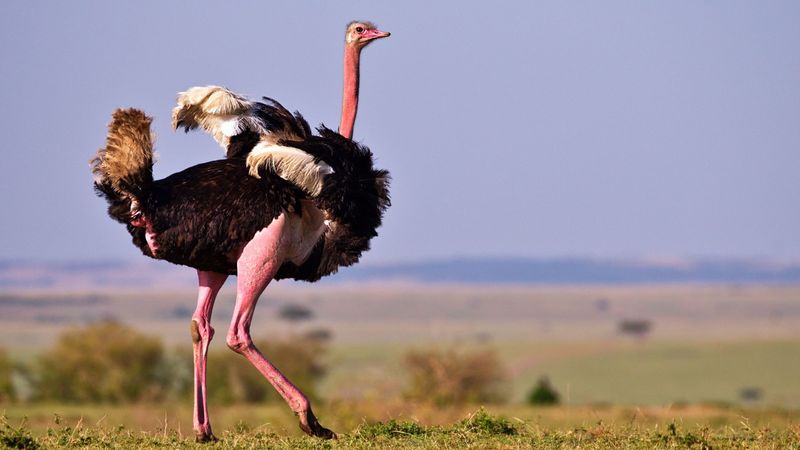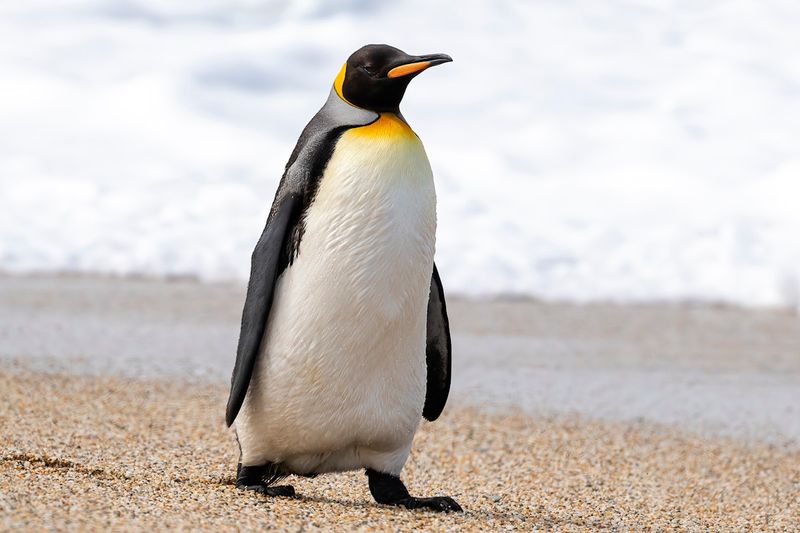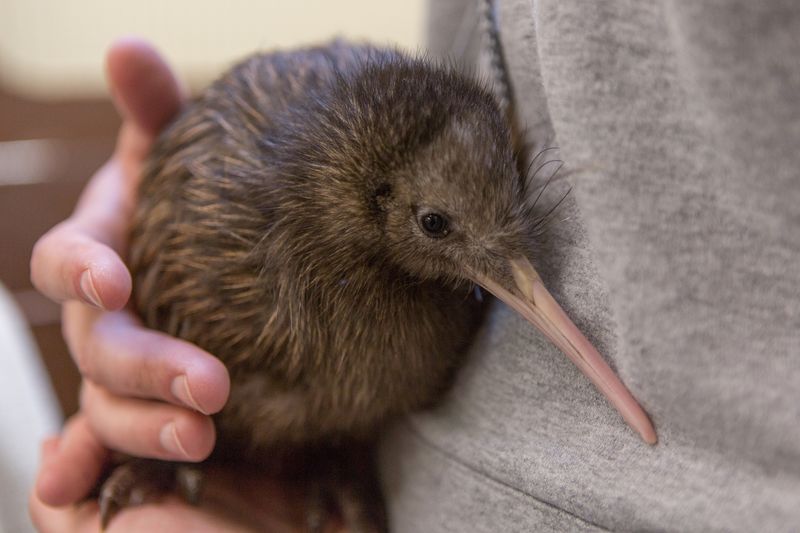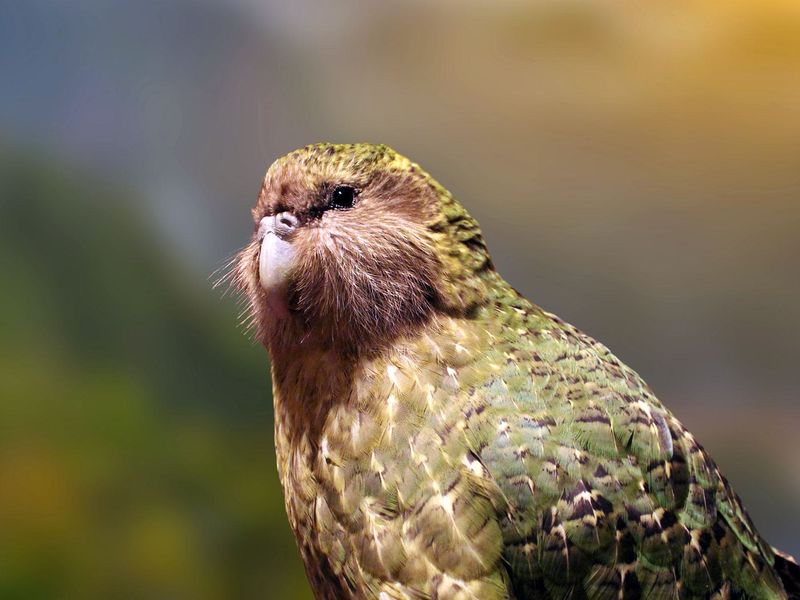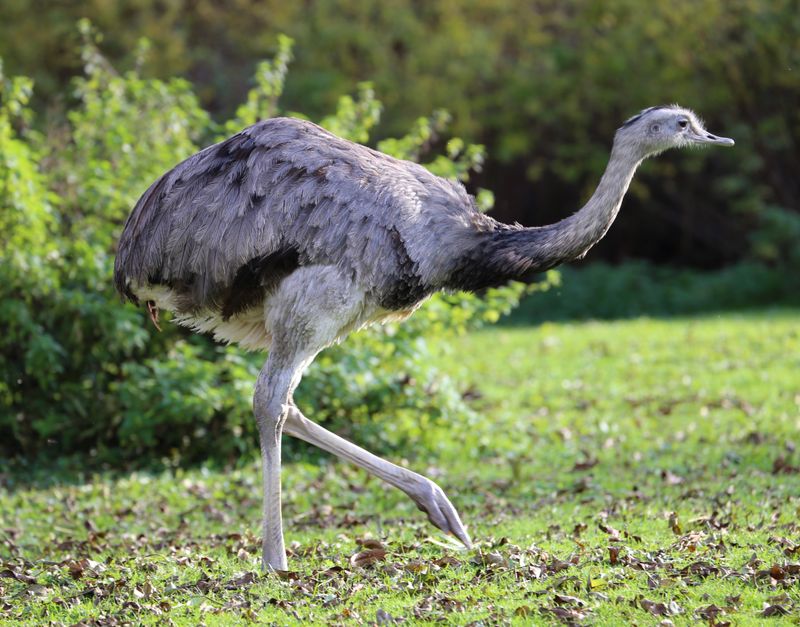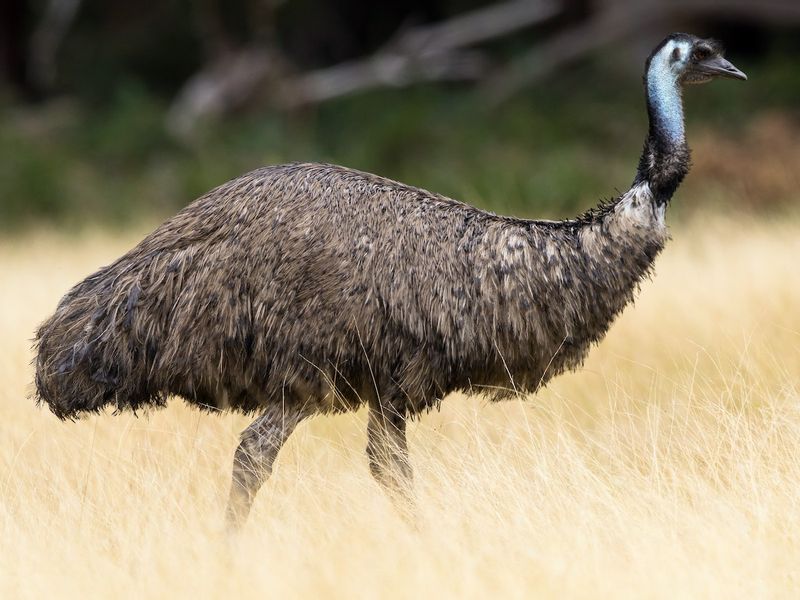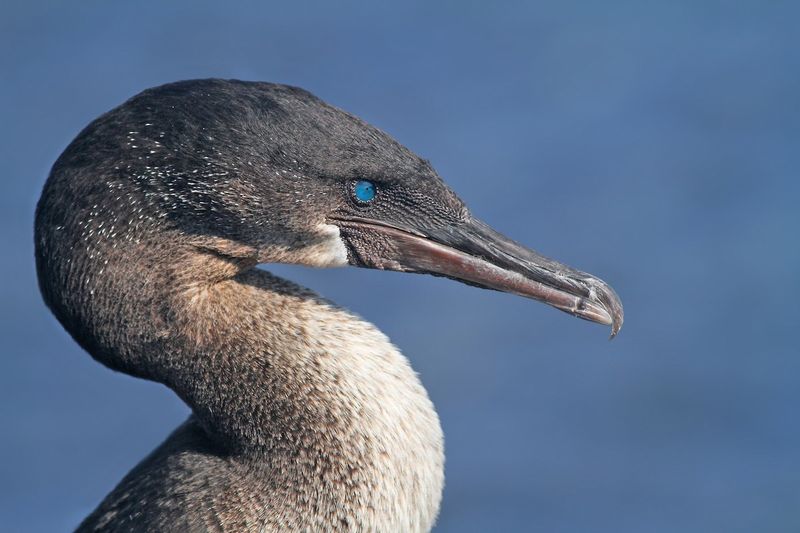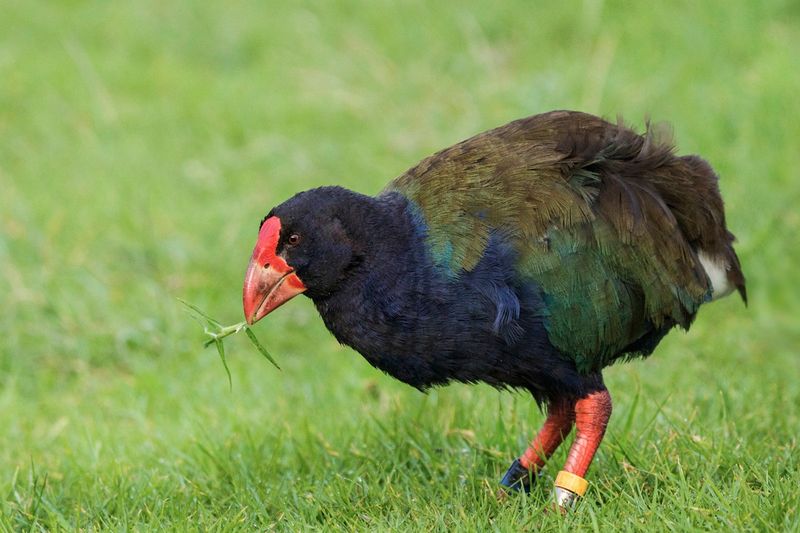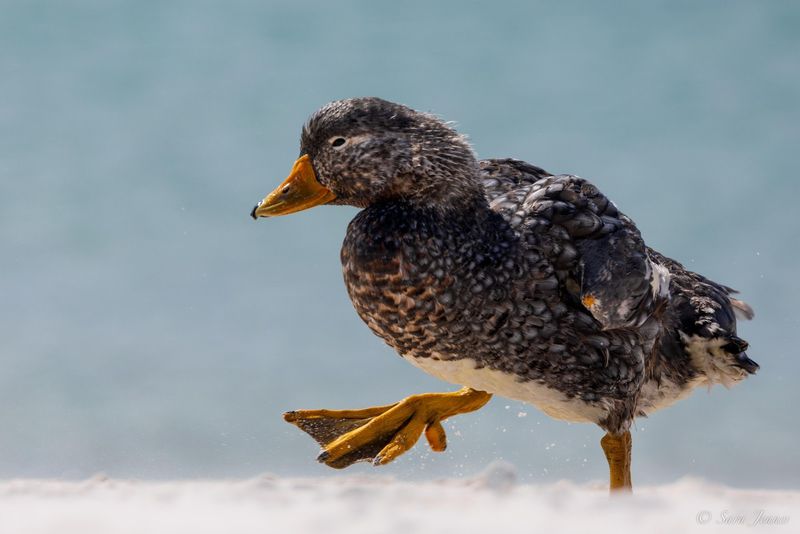📖 Table of Content:
Birds are often synonymous with flight, gracing the skies with elegance and grace. However, not all birds are capable of taking to the air. In fact, some have evolved in such a way that they are permanently grounded.
These flightless birds are fascinating creatures, each with unique reasons for their inability to fly. From adaptations in their bodies to environmental factors, we uncover the stories of ten such captivating creatures.
Join us as we unveil the mysteries behind why these birds can’t fly, offering insights into their lifestyles, habitats, and evolutionary paths.
10. Ostrich
The ostrich is the world’s largest bird, renowned for its impressive height and powerful legs. Native to the African savanna, this bird has evolved to thrive on the ground.
Its inability to fly is primarily due to its massive size. Unlike their flying counterparts, ostriches have flat breastbones without the keel that anchors flight muscles. Instead, their legs are robust and built for speed, allowing them to outrun predators with ease.
Ostriches can sprint up to 45 miles per hour! This adaptation has enabled them to survive in their open habitat where escape by flight isn’t necessary. Additionally, their wings serve other purposes, such as courtship displays and balance while running.
Despite their flightlessness, ostriches are a marvel of evolution, showcasing how birds can adapt to terrestrial life in impressive ways. They are social animals, often found in groups, which ensures better protection against threats.
9. Penguin
Penguins are iconic flightless birds, instantly recognizable with their tuxedo-like appearance. They inhabit the cold regions of the Southern Hemisphere, with many species residing in Antarctica.
Their inability to fly is compensated by exceptional swimming abilities. Penguins have adapted to life in the water, where their wings have evolved into flippers. These flippers grant them superb agility underwater, enabling them to catch fish and evade predators.
Their body is streamlined for swimming, akin to a torpedo. On land, penguins waddle charmingly, a behavior that endears them to people worldwide.
8. Cassowary
The cassowary is a striking flightless bird native to the tropical forests of Australia and New Guinea. Renowned for its vivid blue and black plumage and a prominent casque on its head, this bird is both beautiful and formidable.
The cassowary’s flightlessness is attributed to its solid bones and heavy body, which make flying impractical.
Instead, it has evolved strong legs, perfect for traversing dense underbrush and escaping threats. These legs are also equipped with sharp claws capable of delivering powerful kicks.
Despite their intimidating reputation, they are generally shy creatures. However, when threatened, they can become aggressive, making them one of the most dangerous birds to humans.
7. Kiwi
Kiwis are small, nocturnal birds native to New Zealand, renowned for their unique appearance and behaviors. Unlike other birds, kiwis have tiny, rudimentary wings hidden under their shaggy brown feathers, making them flightless.
Their flightlessness is an adaptation to a ground-dwelling lifestyle. With no natural land predators historically, kiwis evolved without the need for flight. They are equipped with strong legs and a keen sense of smell, unusual for birds, to forage in the leaf litter and soil.
Kiwis have long, slender beaks with nostrils at the tips, allowing them to sniff out insects and invertebrates. They are solitary birds, mostly active at night, which helps them avoid predators.
6. Kakapo
The kakapo, also known as the night parrot, is a critically endangered flightless bird native to New Zealand. This unique parrot is the world’s only flightless parrot and is nocturnal, spending most of its time on the forest floor.
Its inability to fly stems from its heavy body and short wings. Instead, it uses its strong legs to walk and climb trees.
The kakapo has a distinctive green plumage, providing excellent camouflage against predators. Historically, kakapos had few natural predators, allowing them to evolve without the necessity of flight.
However, the introduction of predators by humans has severely impacted their population. The kakapo’s story is a poignant example of how human actions can threaten unique species, but it also showcases the resilience and adaptability of nature when given a chance.
5. Rhea
The rhea is a large, flightless bird native to the grasslands and open plains of South America. Often mistaken for ostriches due to their similar appearance, rheas are known for their impressive size and long legs.
Their flightlessness is attributed to their large body and small wings, which are not suitable for flying. Instead, rheas have adapted to an agile ground-dwelling lifestyle. They can run swiftly, using their legs to outrun predators.
Rheas are social birds, often forming flocks which provide safety in numbers. Their diet consists of plants, fruits, and insects, making them important seed dispersers in their habitat.
4. Emu
The emu is Australia’s largest native bird and the second-largest bird in the world, after the ostrich. Flightless due to its enormous size and strong legs, the emu is built for running rather than flying. This adaptation helps it cover vast distances in the search for food and water in the arid Australian outback.
With powerful legs, emus can travel great distances efficiently, reaching speeds of up to 30 miles per hour. Their flightlessness is compensated by their agility and endurance.
Emus are primarily herbivores, feeding on a variety of plants, seeds, and fruits. They play a vital role in their ecosystem by promoting plant growth through seed dispersal.
3. Flightless Cormorant
The flightless cormorant, native to the Galapagos Islands, is a fascinating example of evolution in isolation. This bird has lost the ability to fly but gained impressive swimming skills. Its wings are small and not suitable for flight, but they are ideal for underwater hunting.
The flightless cormorant uses its powerful legs and webbed feet to propel itself through water with remarkable agility. It primarily feeds on fish and marine invertebrates, diving to catch its prey.
This adaptation to an aquatic lifestyle highlights the unique evolutionary path taken by species in the Galapagos.
2. Takahe
The takahe is a rare, flightless bird endemic to New Zealand, recognizable by its vibrant plumage and stout build. Once thought to be extinct, this bird was rediscovered in the mid-20th century, sparking significant conservation efforts.
Takahe have evolved to live in alpine grasslands, where their flightlessness is offset by strong legs that allow them to move efficiently through their rugged terrain. Their diet consists primarily of grasses and shoots, which they forage using their sturdy beaks.
The takahe’s survival is a testament to the delicate balance of ecosystems and the importance of conservation. With only a few hundred individuals left, efforts continue to protect their habitats and ensure their survival.
Their striking colors and unique behaviors make them a symbol of New Zealand’s rich biodiversity.
1. Steamer Duck
The steamer duck is a unique flightless bird native to the southern coasts of South America. Named for their unusual paddling motion, which resembles a steamboat’s wheels, these ducks are adapted to life in the water.
Their wings, though small and unsuited for flight, are powerful tools for swimming. Steamer ducks use their robust legs and wings to navigate the cold, turbulent waters, where they hunt for fish and crustaceans.
Their inability to fly is compensated by their excellent swimming abilities. The flightless variety of this species is predominantly found in oceanic environments, where they thrive.
Steamer ducks are known for their territorial nature, often engaging in fierce battles with other ducks. Despite their aggressive demeanor, they are an essential part of their ecosystem, contributing to the balance of marine life.
